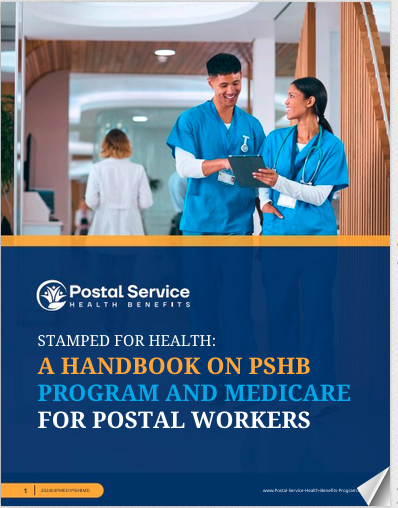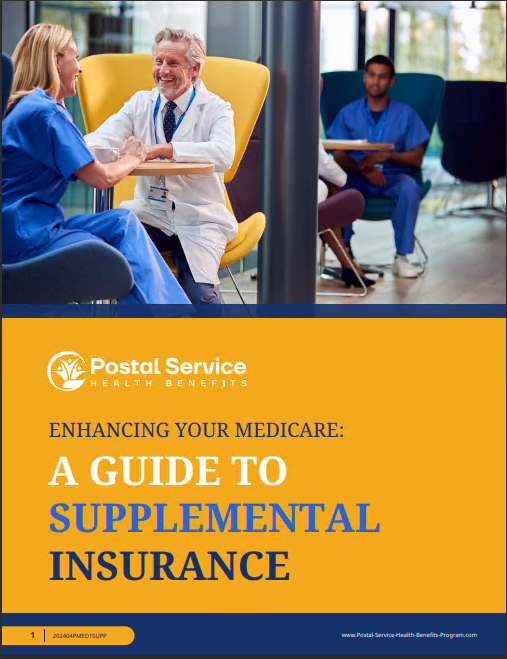Key Takeaways:
-
Postal employees will transition from the Federal Employees Health Benefits (FEHB) program to a new system under the Postal Service Health Benefits (PSHB).
-
The change in health coverage aims to offer plans tailored to the unique needs of postal employees, providing important considerations for their future healthcare.
Say Goodbye to FEHB: What Postal Employees Need to Know About Their New Health Benefits
The year 2024 brings a significant change for postal employees as they say goodbye to the Federal Employees Health Benefits (FEHB) program. Starting in 2025, postal workers will enroll in a new health insurance program designed specifically for them: the Postal Service Health Benefits (PSHB) program. This shift represents a major transition in how postal employees will manage their healthcare. For many, understanding the differences and what to expect is crucial to ensuring seamless coverage. Here’s everything postal workers need to know about their new health benefits.
Why Is the Switch Happening?
The introduction of the PSHB program stems from the Postal Service Reform Act of 2022. This legislation was designed to modernize the U.S. Postal Service and address long-standing financial challenges. One of its provisions mandates that postal employees and retirees transition from the FEHB program to the newly created PSHB program.
This switch is expected to streamline the health benefits process for postal workers, offering plans that better align with their specific needs while keeping the costs of healthcare sustainable for both employees and the postal service. It also removes the obligation for USPS retirees to enroll in Medicare Part B, a requirement that caused confusion and concern for many in the past.
What Does This Mean for Current Employees?
For current postal employees, the transition to the PSHB program will require selecting new health plans during the open enrollment period in the fall of 2024, ahead of the January 2025 switch. Although the PSHB will function similarly to the FEHB program, there will be differences in the plan options and networks available.
Employees should be prepared to review and compare plans carefully. While the PSHB aims to provide comparable coverage, it’s essential to evaluate factors like network providers, prescription drug coverage, and any changes in out-of-pocket expenses. Postal employees should also be proactive in ensuring that their preferred doctors and hospitals are included in their new PSHB plan network.
How Will Retirees Be Affected?
For postal retirees, the transition to PSHB comes with additional considerations. Those already retired or set to retire by 2025 will need to navigate the transition while ensuring they maintain their healthcare coverage. One significant change is that postal retirees will no longer be required to enroll in Medicare Part B unless they choose to do so.
This change could be beneficial for retirees who found the added cost of Medicare Part B burdensome. However, it’s important to weigh the benefits of Medicare, such as broader coverage and lower out-of-pocket costs, against the costs of maintaining it. Retirees should also check whether their current health providers accept Medicare and if these providers will be included in the PSHB network.
What Are the Key Differences Between FEHB and PSHB?
One of the main questions on postal employees’ minds is, “What’s different between FEHB and PSHB?” While the programs share similarities, there are several key differences that employees and retirees need to understand:
-
Plan Options: The PSHB program will offer health plans that are exclusively available to postal employees, meaning the pool of plans will be different from those available under FEHB. This could lead to more tailored options, but also fewer choices compared to the broader FEHB system.
-
Medicare Integration: A major focus of PSHB is the integration with Medicare for retirees. Under PSHB, retirees will be encouraged to enroll in Medicare Part A (hospital insurance), but not required to enroll in Medicare Part B (medical insurance). This differs from FEHB, which encouraged enrollment in both Part A and Part B for full coverage.
-
Premiums and Costs: While exact costs won’t be known until the PSHB plans are released, the Postal Service Reform Act aims to maintain affordable healthcare options for employees. However, employees should carefully review the premium costs, deductibles, and other out-of-pocket expenses associated with PSHB plans.
-
Provider Networks: Another key difference could be in the provider networks. The PSHB program may have different partnerships with healthcare providers compared to FEHB, meaning postal employees and retirees will need to verify that their preferred doctors, specialists, and hospitals are covered.
What Should Employees Do to Prepare?
The transition to the PSHB program might feel overwhelming, but there are several steps postal employees can take to ensure they’re ready:
-
Review Current Coverage: Take the time to understand your current FEHB coverage, including your premiums, deductibles, and provider networks. This will serve as a baseline for comparing the new PSHB plans.
-
Research New Plan Options: During the open enrollment period in fall 2024, review all available PSHB plans. Pay attention to plan details, such as coverage for prescription drugs, specialist visits, and hospital stays. Compare these features to your current plan to determine the best fit for your needs.
-
Check Medicare Options: If you’re nearing retirement or are already retired, consider how Medicare will fit into your health coverage strategy under PSHB. You may want to speak with a licensed insurance agent to get detailed information about the benefits of enrolling in Medicare Part A or Part B alongside PSHB.
-
Prepare for Open Enrollment: Mark your calendar for the open enrollment period in 2024, and be sure to gather all necessary information to make informed choices about your health plan. This will include understanding your medical needs, reviewing the new PSHB plan details, and considering any changes in your healthcare providers.
Common Concerns and Questions
Postal employees and retirees have voiced several concerns about the upcoming change. Here are some of the most common questions and what we know so far:
-
Will my doctor still be in-network?
One of the biggest concerns is whether employees’ current doctors and healthcare providers will remain in-network under the new PSHB plans. Since the provider networks may change, it’s important to verify whether your doctors will be covered. Most insurers provide tools on their websites to check this information, which will be especially helpful during the open enrollment period. -
What happens if I don’t enroll in PSHB?
Enrolling in a health plan under PSHB will be mandatory for all active postal employees. If you don’t select a plan during open enrollment, you may be automatically enrolled in a default plan. To avoid being placed in a plan that may not suit your needs, be proactive and select the plan that works best for you and your family. -
Will there be significant cost increases?
While it’s too early to predict exact costs, the PSHB program is designed to be financially sustainable. It’s still critical to carefully review premiums and out-of-pocket expenses when selecting a plan. Compare these costs with your current FEHB coverage to anticipate any financial impact.
Navigating the Transition Smoothly
The transition from FEHB to PSHB doesn’t have to be daunting. By staying informed and preparing in advance, postal employees and retirees can make a smooth transition to their new healthcare plans. The key is to start early, review all available options, and seek help if needed.
Licensed insurance agents can provide guidance and clarity on the new PSHB options. While the switch represents a significant change, it also brings opportunities to find health plans tailored specifically for postal employees’ needs. For retirees, the flexibility around Medicare enrollment is another factor to consider when planning future healthcare.
Staying Ahead with Your Health Coverage
With the 2025 deadline fast approaching, postal employees and retirees must stay ahead of the game when it comes to their health coverage. This shift to the PSHB is a new chapter in how postal workers will manage their healthcare, and understanding the new program is crucial to making informed choices. As the year progresses, more details will become available, and staying proactive is key to navigating this transition smoothly.
Contact Information:
Email: [email protected]
Phone: 7275557890







